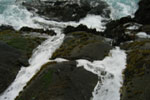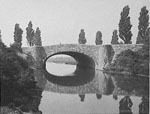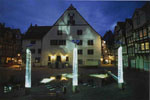Contemporary Urban Waterscapes
designing
public spaces in concert with nature
|
The transformation of nature through urban development has resulted in a thwarted hydrologic cycle. Urban infrastructure built to contain and overpower natural processes has been particularly harmful. Among the many consequences of a disturbed hydrologic cycle are polluted waterways because of sewer overflows and urban runoff, subsiding land due to a diminished water table, and city dwellers that are deprived of experiencing the fundamental life force of water. This has not always been so. The Romans and the Moors celebrated water and harnessed its qualities in functional and artistic ways through aqueducts, fountains and gardens. In the late 19th and early 20th centuries, Frederick Law Olmsted devised strategies that both solved complicated drainage problems and provided cherished public open space as in the Back Bay Fens. In recent years, some ecologically- and culturally-conscious design practitioners have once again sought to harness the processes of nature and the aesthetic qualities of water to create urban spaces that bring people together in embracing the nature and culture of a place. These types of projects are called "waterscapes." (Dreiseitl) How do waterscape projects combine landscape design and natural processes to create, "dialogues that engage both culture and nature."? (Spirn 1988) This study will focus on projects by two contemporary design firms - Atelier Dreiseitl and Gustafson Guthrie Nichol - that create urban spaces that both re-establish the urban hydrologic cycle and harness the aesthetic qualities of water. The case study waterscape projects are:
These projects prioritize the role of water in our urban systems and allow people to experience water in numerous ways, thus resulting in unique, sustainable and expressive urban spaces. |
image captions and credits |
||


